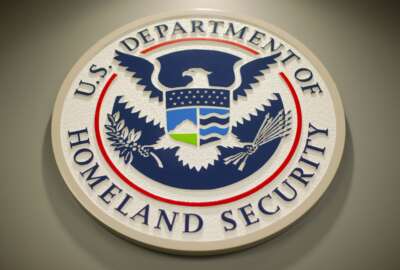What do feds want in the ‘future of work’? Sometimes, it’s good old-fashioned time off
If you work at the Department of Homeland Security, you received an email from the big boss on April 14 that you don’t want to leave unread.
If you work at the Department of Homeland Security, you received an email from the big boss on April 14 that you don’t want to leave unread.
Sure, all-hands emails can often be filled with platitudes — “We appreciate your hard work” — and little else. And at an agency like DHS, where political turmoil is the status quo, it might be a response to the latest controversy or even a resignation email.
But the note from Homeland Security Secretary Alejandro Mayorkas was certainly positive, and it went beyond the typical banalities. With Easter, Passover and Ramadan all converging in April this year, Mayorkas noted the significance of the time for people of different faiths, while acknowledging many at DHS would not be able to take time off.
“This sacrifice is characteristic of the selfless dedication that all of you demonstrate every single day, as you serve our department and our country with such distinction,” he wrote. “In recognition of your service, I am privileged to grant all personnel 16 hours of administrative leave that can be used this calendar year or next. Your agency’s or office’s human resources personnel will provide you with implementing guidance.”
Employees from DHS celebrated “Easter Bunny Mayorkas” on the r/fednews subreddit, while their counterparts at other agencies lamented that their bosses hadn’t done the same for them.
Agency heads have broad authority to grant administrative leave, but the Office of Personnel Management indicates the power is typically reserved for emergency situations, like when severe weather prevents employees from reporting for work.
Former DHS chief human capital officer Angie Bailey says it’s not typical for agency leaders to grant administrative leave as a bonus benefit.
“It is common practice to grant a few hours around holidays, but to the best of my knowledge, DHS is the first agency to do so as a recognition for a workforce that works incredible long and hard hours,” Bailey told me in an email. “Especially for the workforce that doesn’t get to enjoy the traditional holidays so that we remain safe as a nation”
Across DHS components, the work is rarely slow or easy, and that’s been especially true lately. Whether it’s digging out of a record immigration case backlog or orchestrating a national cybersecurity campaign, DHS employees are likely finding it difficult to take time off these days.
“My folks and a lot of the folks in this room probably need a friggin’ break,” Cybersecurity and Infrastructure Security Agency Director Jen Easterly said at a cybersecurity conference last week. “We’re not there yet, though.”
To be clear, two days’ worth of administrative leave is not going to solve DHS’s morale issues. The department’s employee engagement scores have seen incremental improvements in recent years, and engagement varies widely across DHS subcomponents. But DHS still ranks last among the 17 big agencies in the Partnership for Public Service’s Best Places to Work in the Federal Government.
“I wouldn’t call it a big morale booster, when there are so many factors impacting our workforce morale — everything from CRs to shutdowns to wicked swings in policies depending on the political winds, not to mention the incredibly long and hard hours for a public that at times is not very grateful for their sacrifices,” Bailey said.
But Bailey also acknowledged the move to recognize employee sacrifices won’t go unnoticed or be easily forgotten.
“Small, meaningful recognitions, such as this by Secretary Mayorkas will always be appreciated by the workforce — a workforce that cares deeply about their mission,” she said. “This is certainly the least we can do for them.”
At Federal News Network, we’ve extensively covered employee engagement and efforts to position the federal government as a “model employer.” Agencies are grappling with how to recruit and retain employees at a time when many people are re-evaluating what they want out of a job.
But amid the handwringing about the “future of work,” Mayorkas’ move is a good reminder that sometimes, a little recognition can go a long way.
Nearly Useless Factoid
There are 293 ways to make change for $1.
Source: Mathematical Association of America
Copyright © 2025 Federal News Network. All rights reserved. This website is not intended for users located within the European Economic Area.
Follow @jdoubledayWFED






